
© Frank Atura. (Click image for larger version)
Sarasota Ballet
Digital Programme 4: Paul Taylor’s Brandenburgs and Company B
★★★★★
Streamed 29 January – 2 February 2021
www.sarasotaballet.org
www.ptamd.org
Sarasota Ballet is the first company, other than the late Paul Taylor’s own, to perform his 1988 Brandenburgs, to movements from two Bach concertos. When Iain Webb’s Florida-based company performed it in January last year, shortly before the pandemic caused the closure of theatres, Michael Trusnovec, Taylor’s former leading man, came to mount the chamber piece. He returned a year later to coach the dancers for their digital performance, recording an engaging introduction to the company’s double bill of Taylor’s works.
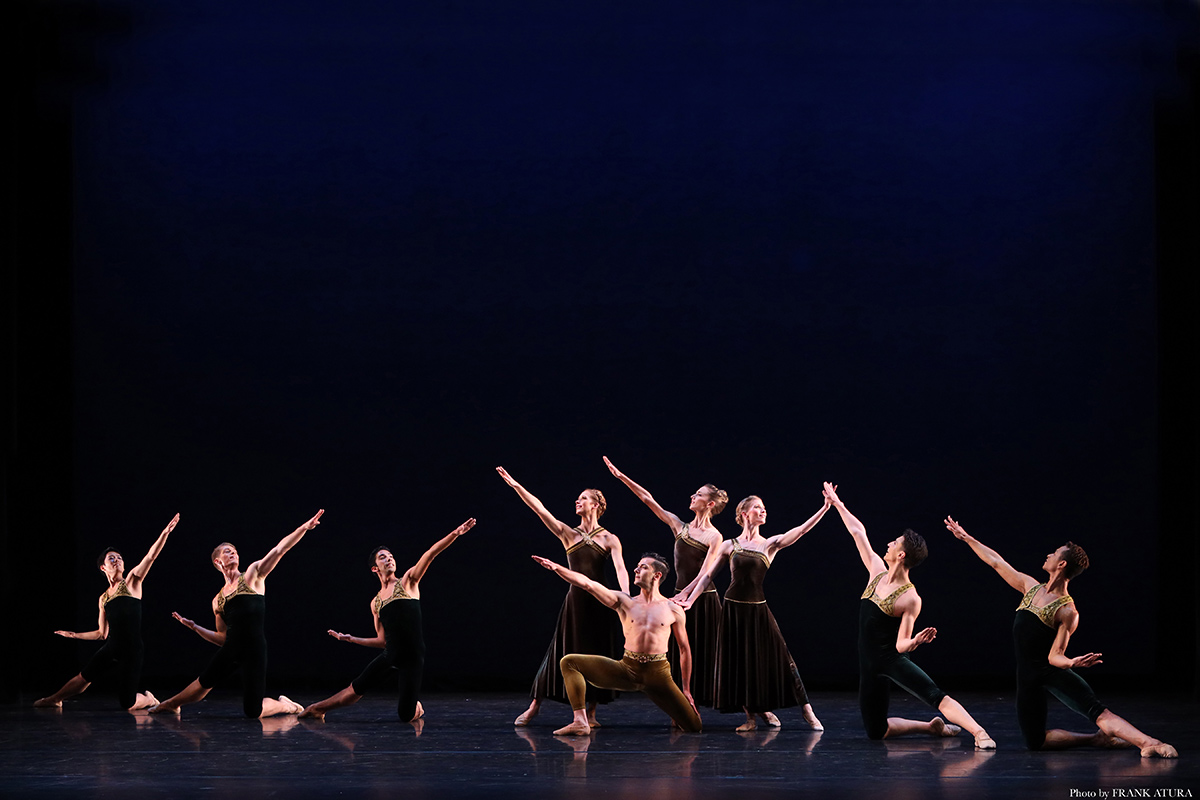
© Frank Atura. (Click image for larger version)
Although the Paul Taylor Dance Company visited London from the 1970s onwards, its Sadler’s Wells seasons grew sparser: the last UK tour was in 2003. His dances were dropped from Rambert’s repertoire, so the range of his work has become unfamiliar to audiences in this country (apart from excerpts on YouTube). Brandenburgs is one of six pieces Taylor made to Bach, using the buoyant vocabulary he developed for baroque music. Performed by Sarasota’s ballet-trained dancers, Brandenburgs looks balletic: feet are crossed in fifth position, hips turned out in attitude turns, legs and feet fully stretched in arabesque lines. Sarasota’s dancers wear soft slippers, not bare feet; their pirouettes spin on balance rather than swoop into the next step. Taylor’s contemporary dancers are (or were) required to be less meticulous, giving themselves over to the impetus of the musical choreography instead of end-stopping positions.
Brandenburgs deliberately defies classical ballet conventions by having a corps of five men. Three principal women are attendant muses for the leading male dancer, Ricardo Graziano. In the opening and closing tableaux, they stand behind him as he kneels, hands on his shoulders, flanked by the corps. Only after all nine have danced together as friendly companions is Taylor’s tribute to Balanchine’s Apollo revealed. Graziano, bare-chested unlike the other men, treats the three women respectfully as they wind around him, extending his hand to each one. Danielle Brown, Katelyn May and Ellen Overstreet each have solos as they flirt discreetly with him: he doesn’t commit himself to one in particular.

© Frank Atura. (Click image for larger version)
He then has an adagio solo in which he reaches out into space, curving and torqueing his torso to resemble a Greek sculpture of an athlete. His god-like soliloquy over, he joins the others for a fleet-footed finale, as they skip and skim across the stage. The final sequence demands considerable stamina from the leading man as well as from the ensemble, forever re-combining into different groupings. Graziano survives serenely, resuming his place at the centre of the closing line-up. The ending is so exhilarating that the absence of delighted applause for the curtain calls comes as a sad reminder of the times we are going through.
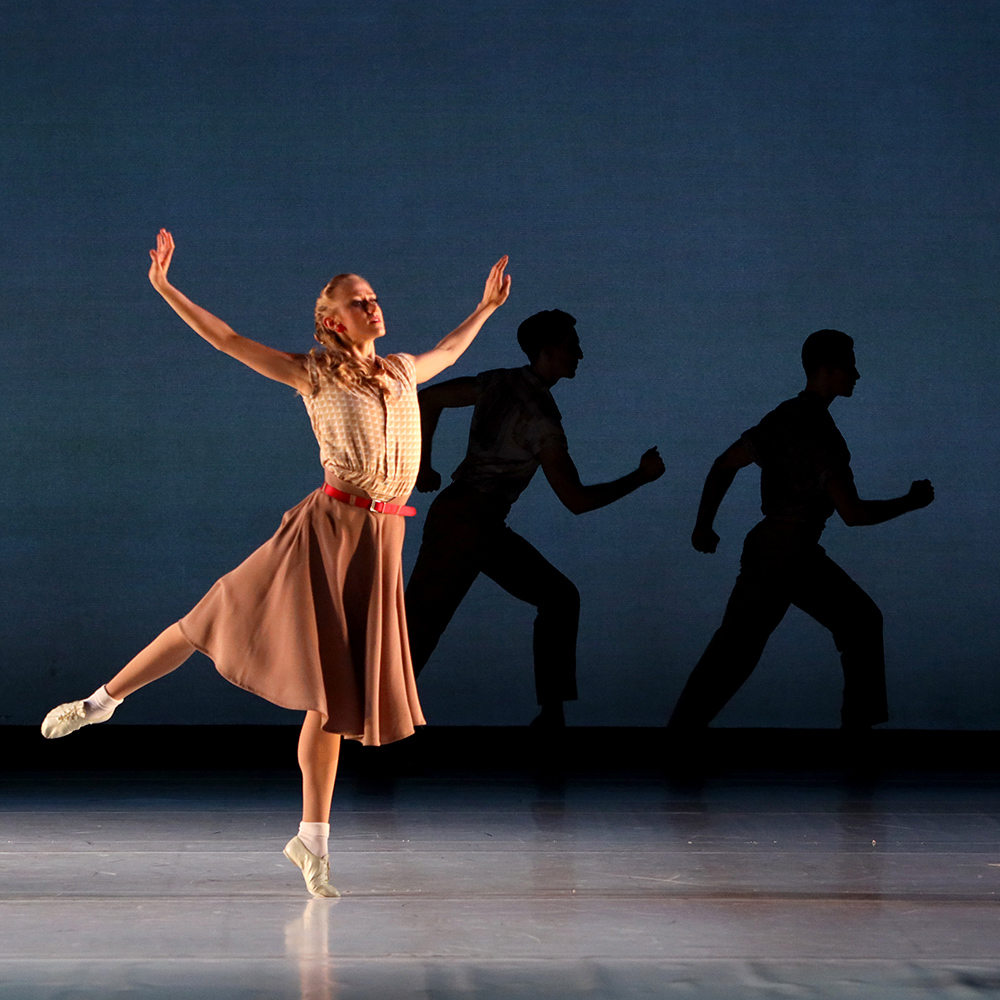
© Frank Atura. (Click image for larger version)
Company B seems to be a light-hearted piece of Americana, illustrating 1940s songs by the Andrews Sisters. When Her Majesty Queen Elizabeth was invited to a performance by the Taylor’s company in Sadler’s Wells in the 1990s, she tapped her fingers to the cheery rhythms (or so reports say). The cast are dressed as American teenagers – college kids in chinos or full skirts, wearing white bobby socks and shoes. ‘Take your partner and join in the fun’ urges one of the lyrics as the youngsters dance to the ‘Pennsylvania Polka’. Then you notice a frieze of men carrying rifles in the background. They march across the back of the stage before, one by one, they collapse. In ‘Oh Johnny’, the nerdy boy in specs, Ivan Spitale, is besieged by seven girls, thanks to the shortage of men. Yuki Nonaka, the carefree Boogie Woogie Bugle Boy of Company B, suddenly falls backward, shot, at the very end of the song: his number is up. To the lyrics of ‘There will never be another you’, Kate Honea mourns the memory of her soldier lover, Richard House. He joins the silhouetted death march on the last notes of the song. Everyone comes back for the finale to ‘Bei mir bist du Schön’. The light darkens as the stage gradually empties of young lives.
Taylor’s undermining of gung-ho American optimism as the US joined in World War Two is deftly done. Beneath the veneer of girlish innocence in ‘I can dream, can’t I?’ is a suggestion of repressed, illegal homosexuality, before heterosexual couples jive happily to ‘Oh Joseph, won’t you name the day’. The catchy rhythms of ‘Rum and Coca Cola’ are given to a teasing girl flaunting her red underskirt as six soldiers ogle her. It seems the Andrew Sisters had no idea when they recorded the Trinidadian calypso in 1945 of the implications of the (plagiarised) lyrics: ‘Both mother and daughter working for the Yankee dollar.’ Taylor leaves it to us to register what that work involved, as Elizabeth Sykes skips away, untouched.
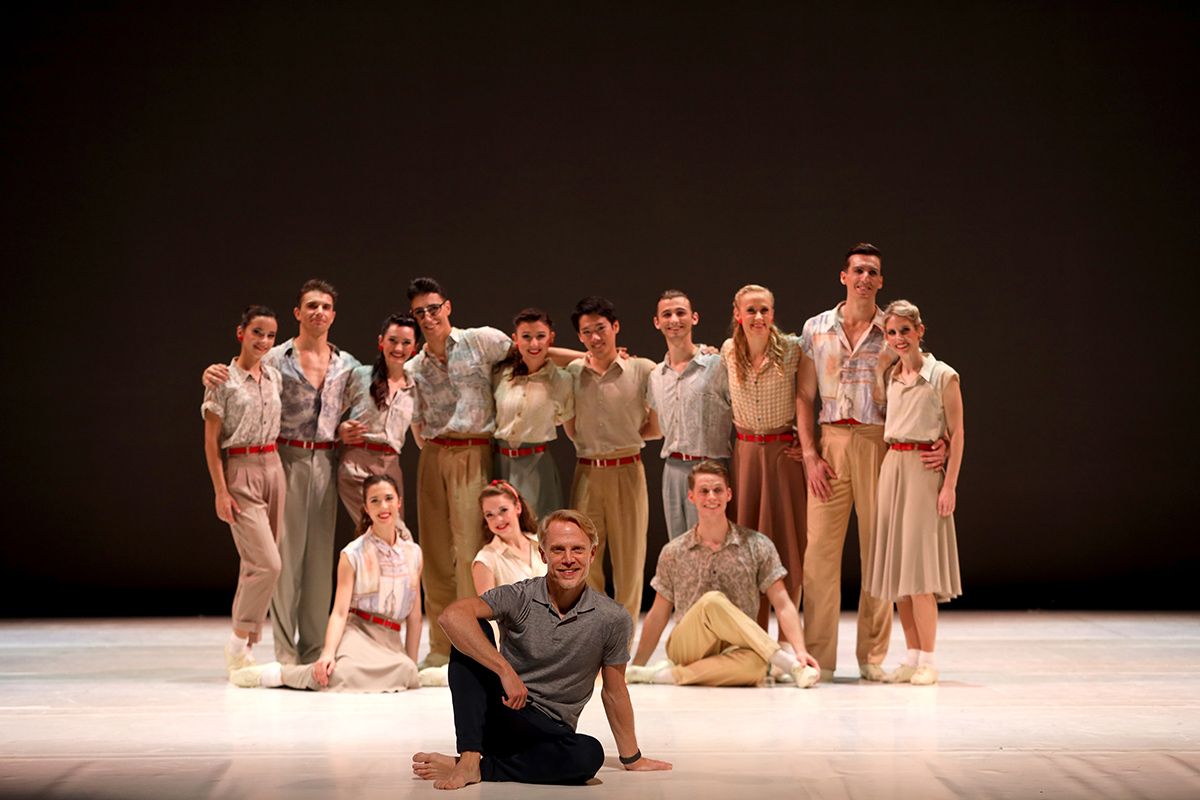
© Frank Atura. (Click image for larger version)
Thank you, Sarasota Ballet, and Michael Trusnovec, licensee of Paul Taylor’s works, for making two of his lovely pieces available to a virtual audience bereft of live performances. Thank you to the dancers for rehearsing them so scrupulously for a single recording session instead of a season of performances applauded by real live spectators.












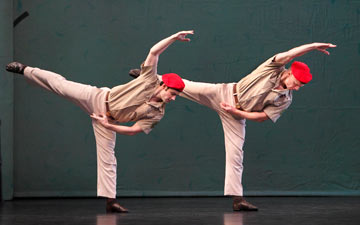
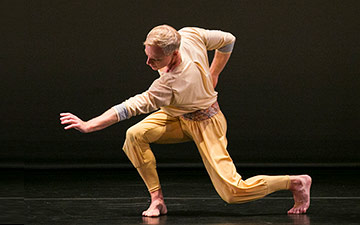

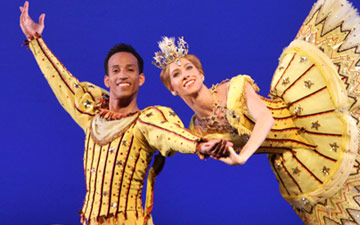
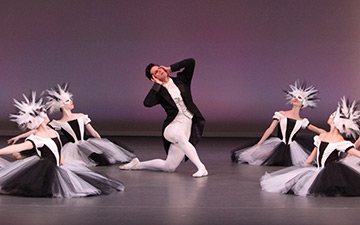
You must be logged in to post a comment.